
ClickUp Tips for Users with ADHD
How does one begin to write a blog about ADHD and wind up fifteen minutes later on Jack Black’s Wikipedia page, absolutely shook?
The irony isn’t lost on me, folks:
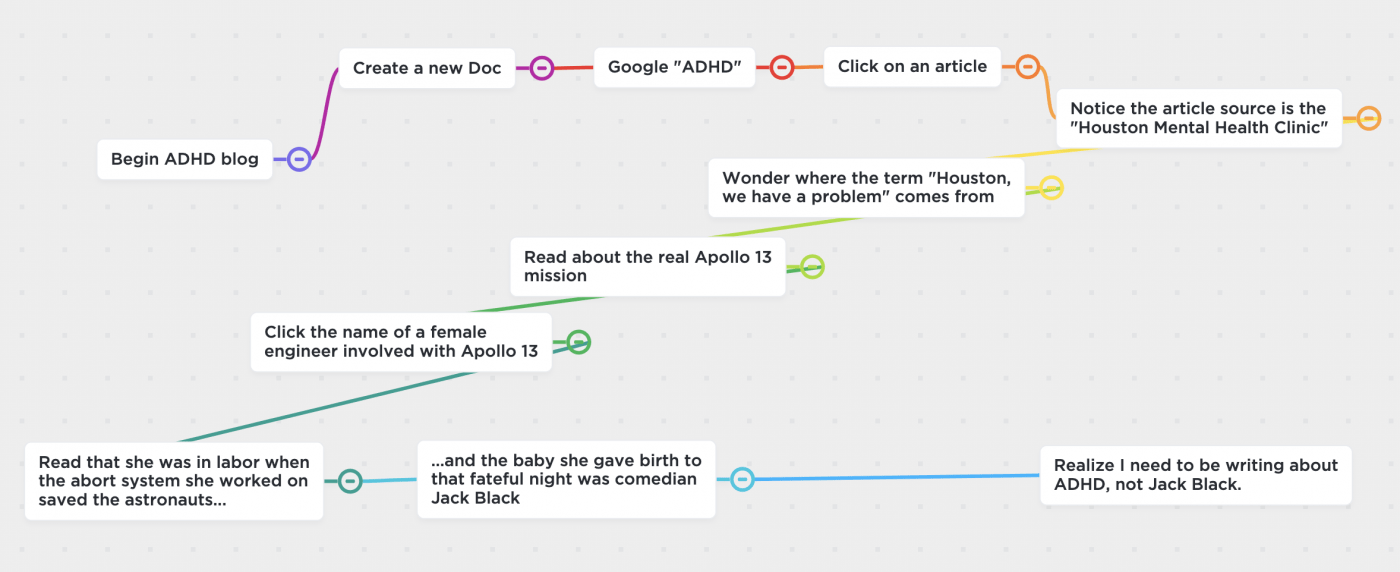
Yep, this is a completely accurate portrayal of how dangerously easy it is for me, an adult with attention deficit hyperactivity disorder, to lose fifteen minutes of productive time without even realizing it.
If it weren’t for the sound of a ClickUp notification snapping me back to reality, I might’ve gotten knee-deep in some clickbait article called “THIS is what the ‘School of Rock’ kids look like NOW 😱” before panicking over how stupid I am for losing track of time again.
Lucky for me, notifications are far from the only feature on ClickUp that have helped me manage my ADHD symptoms and excel at the job that I love. Together with some ClickUp colleagues who also live with ADHD, we’ve curated the best tips and tricks to help more people utilize this platform to manage ADHD symptoms while crushing it at work.
ADHD: Forget What Ya Heard
The term “ADD,” similar to the terms “OCD” or “bipolar,” has become this weird modern colloquialism-turned-replacement for normal traits like “easily distracted,” “super organized,” or “moody”.
Despite harmless intentions, hyperbole via pathology does more to spread misconceptions and water down the reality of these disorders than it does to normalize them.

ADHD—no longer clinically called “ADD”—is among one of the most quietly stigmatized cognitive disorders, making it challenging for individuals to identify it, get a diagnosis, explore treatment options, and disclose it to others. Some of the most common stereotypes include:
- ❌ ADHD is something you can grow out of
- ❌ ADHD is primarily seen in young boys
- ❌ ADHD is a fancy term for “hyper” or “unmotivated to focus”
- ❌ ADHD is not a disorder at all, but rather a lack of discipline
Being an adult woman who is very motivated, very focused on what I want, and probably too self-disciplined at times, I can confidently call BS on that list while providing the receipts:
- ✅ ADHD is not something you can simply grow out of, but about 20% of children being treated will find their symptoms will not cause impairment in adulthood
- ✅ ADHD is notoriously underdiagnosed in young girls but can impact them throughout their lifespan in the same way it impacts males
- ✅ ADHD can present as inattentive ADHD, meaning there is no obvious hyperactivity or physical impulsivity. Both inattentive and hyperactive ADHD impairs the ability to focus on certain tasks, regardless of motivation
- ✅ ADHD is very much a legitimate, helpful diagnosis. Working on self-discipline in challenging areas is something every person treating their ADHD must do daily
Luckily for the 4.4 million adults with ADHD in the US, the days of people undermining the legitimacy of adult ADHD may be numbered. The neurodiversity movement—an effort to support and welcome people with cognitive or neurological challenges ranging from ADHD to ASD into all facets of life—is making great strides to empower people like me in and out of the workplace.
What Adult ADHD Looks Like
When I was first diagnosed with ADHD (then called “attention deficit disorder”) in my freshman year of high school, it was a relief to be given extra help with some school subjects, but it wasn’t widely known that symptoms of ADHD impact a person far beyond the classroom. My parents, like so many others at the time, often mistook ADHD-related struggles at home for flat-out insubordination. They didn’t realize that my chronic lateness, perceived refusal to listen, sleep problems, or poor communication were often the result of a disorder I needed better ADHD tools for, not the result of me being a tool.
It eventually will do a number on you, experiencing heavy blame and punishment for things that respond best to treatment. Yet another reason why the myth of ADHD meaning “undisciplined youth” is laughable (in a gallows humor sort of way 🙃).
All of this impacted the way I viewed—or rather, misunderstood—my ADHD until my late ’20s. But I’m grateful that I eventually understood the reality of my diagnosis at all; many adults who may benefit from ADHD treatment still misinterpret improvable symptoms as personal defects which can often make matters worse.
Here’s how the challenging parts of my ADHD present themselves:

- Having a poor natural concept of time, making it hard to tell how much time has passed, how long things take to do, etc.

- Often forgetting things, having a poor memory for certain types of information
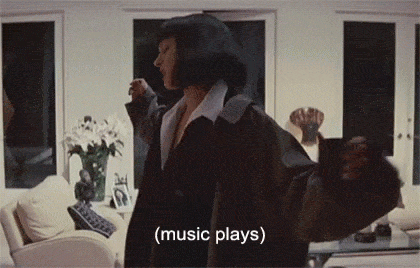
- Hyper-focusing on things that excite me, meaning that I can overlook fine details or things on my plate entirely in a state of heightened distractibility

- Trouble communicating vocally at times because my mind is jumping to things that seem related in my head, but are confusing to others
Because I would be utterly screwed in life if I let all these symptoms get the best of me, I must take steps every day to minimize the interference of my ADHD symptoms and take responsibility for the brain I’ve got. Like many others, I’ve been indoctrinated to write everything down, set reminders to remember things, and create a sustainable organizational method that I can enjoy.
The deliciously ironic thing is, when you have ADHD, keeping track of all of those different tools to help you keep track of things can be a struggle.
This is precisely why ClickUp has changed my life.
Managing ADHD With ClickUp
When I started working at ClickUp, I naturally had to master the platform in order to do my job. Like many new users, I was a little overwhelmed at first by the sheer volume of tools, features, and integrations that were at my disposal, but the best thing I was encouraged to do was to trust myself and find my best workflow.
Because ClickUp is built to look, feel, and behave the way that fits an individual’s unique work style, I loved that there was no wrong way to be productive—especially as someone who doesn’t tend to think “inside the box.” And since everything you could need for productivity is in one place, that ironic challenge of losing track of the tools designed to keep you on track was gone.

I surveyed some of my ClickUp colleagues, ranging from Marketing Managers to Customer Support Champions, to find out which features help them manage their most intrusive ADHD symptoms. With their insight, I’ve gathered the following tips for how you can master ClickUp just the way you are!
Feature Specialty Key:
- 🗂️ = Organization
- ⏰ = Time management
- 🧠 = Remembering things
- 🔍 = Paying attention to detail
- 1️⃣ = Focusing on one thing at a time
Tip 1: Find your favorite view
Helps with: 🗂️ 🧠
This is where it all begins. Take the time to view your Spaces, Folders, and Lists in every view before you dive in. Whether you’re more into tables, visual mapping, lists, or boards, you’ll know you found the right view when you just think, “Oh thank god, this makes sense.”
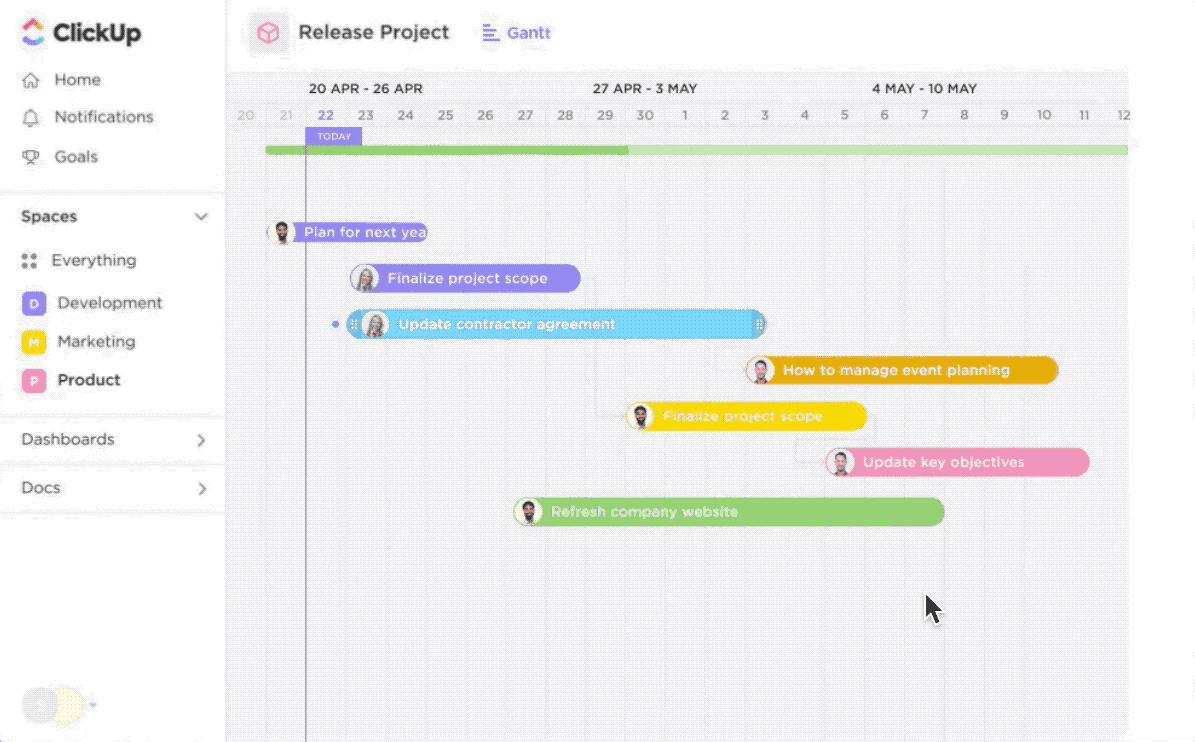
Many people with ADHD are quite visually driven and thrive with consistency. If this sounds like you, having this many options on how to see your tasks and priorities assures that you’ll find a go-to view that empowers you to get started.
Bonus mental health content: Check out our guide on reducing anxiety in the workplace!
Tip 2: Pin the task tray
Helps with: ⏰ 🧠 1️⃣
If tasks are out of sight, they can easily go out of mind when you’re hyperfocused on something else. Pinning the task tray is a must.

Each day I add the tasks that are due today and tomorrow; this helps me focus on one thing at a time and avoid feeling overwhelmed by the tasks on deck. I organize the tasks in my tray by priority by simply dragging and dropping them. Clicking on the task will bring you to its page. When I’m done with the task, I simply clear it from the tray and enjoy the sweet feeling of accomplishment!
Tip 3: Set custom notifications
Helps with: ⏰ 🧠
Having to rely on endless emails to be notified about my workload is something I don’t think I can ever go back to now that I use ClickUp. Constantly dealing with a full, drab inbox was distracting, inefficient, and led to me missing some important notifications at times.
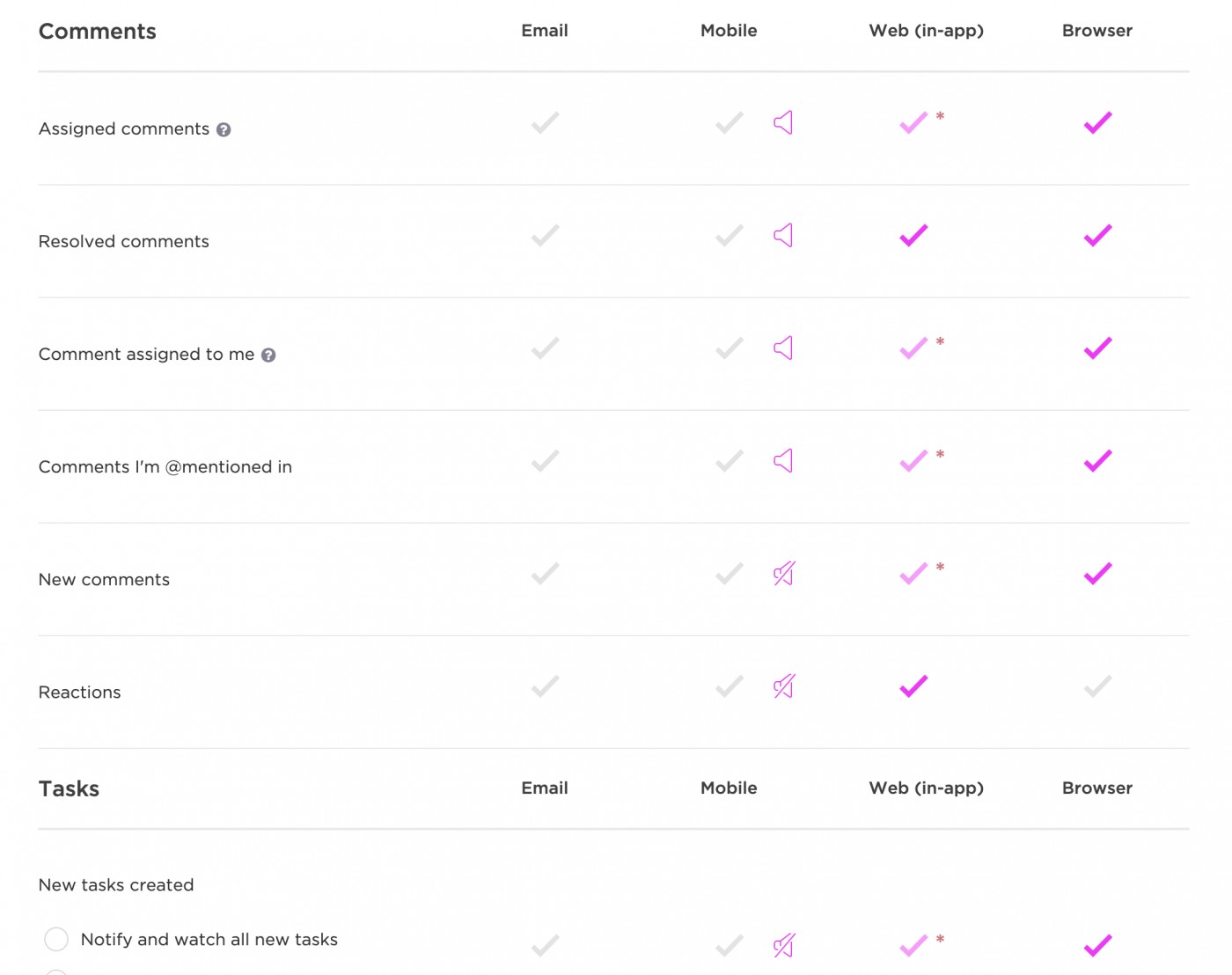
With ClickUp, your notifications are all in one place and filtered to your exact preferences. They’re designed to let you address something immediately if you can, or put it on your task tray if you have to come back to it. They are so crucial for keeping me on task and assuring that nothing slips through the cracks because of my shoddy memory.
Tip 4: Embrace the time tracker
Helps with: ⏰ 🧠 1️⃣
When I was in 6th grade, I had a teaching aide to help me in math class, which was the bane of my existence. She would set a kitschy little egg timer on my desk to help me pay attention to how long each problem took, and though I still have no love in my heart for math, that simple method of tracking time proved to be very helpful to me. And I’m so happy that ClickUp offers the grown-up equivalent to a Special-Ed egg timer.
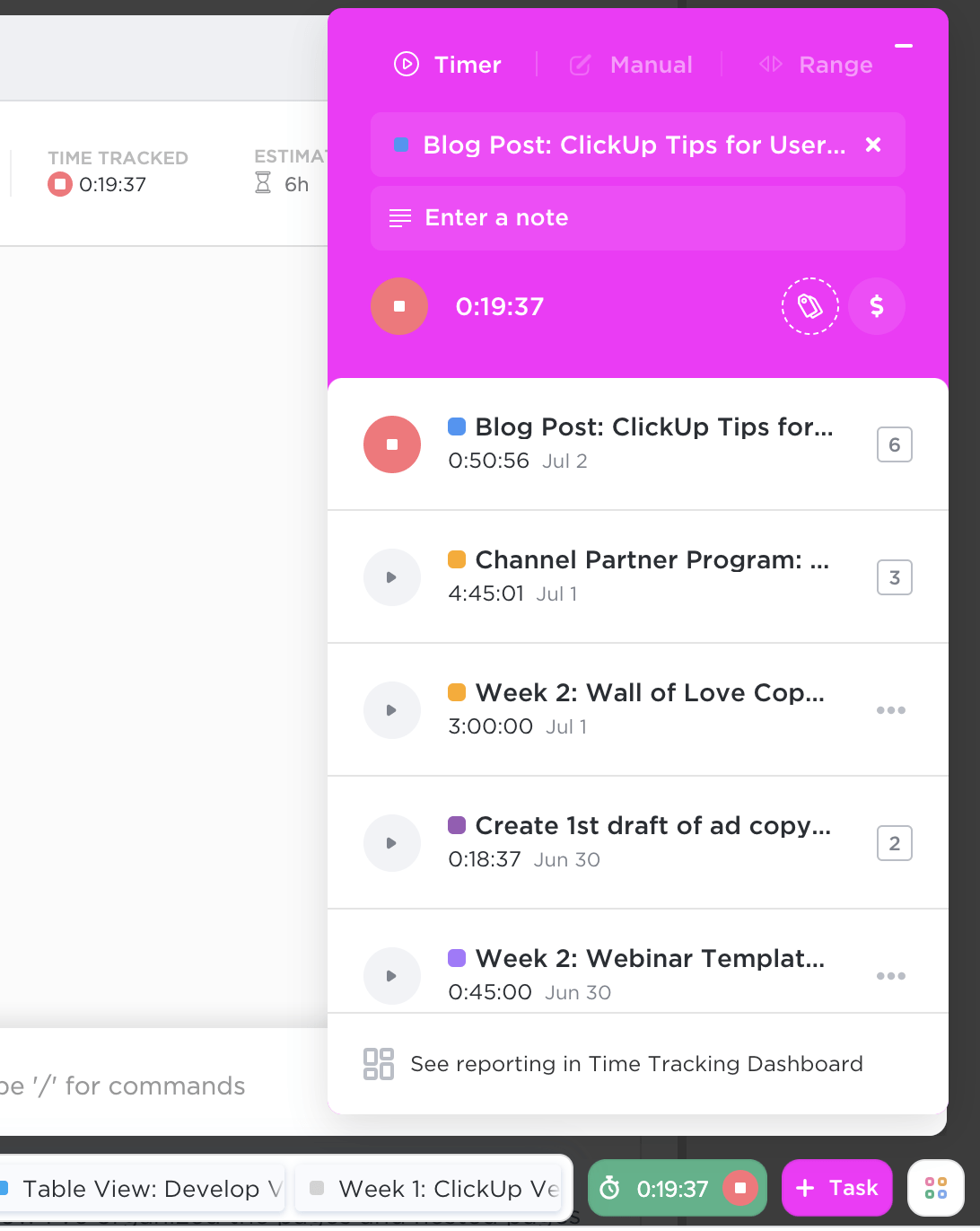
Most of us with ADHD know the importance of keeping track of time, but the tricky part is remembering to do it. What I love about ClickUp’s time tracker is that it shows up bright green at the end of my task tray when it’s actively tracking time, making it hard to miss. Since my natural concept of time thoroughly sucks, it’s been crucial for me to see how long things actually take so I can better prioritize, organize, and manage my work.
Tip 5: Display your Google Calendar in Home
Helps with: ⏰ 🧠
I love my Google Calendar, and I love that I didn’t have to break up with it in order to use ClickUp. After taking literally five seconds to sync my ClickUp tasks with my Google Calendar in App Settings, I returned to my Workspace’s Home and toggled the “Show calendar” option.
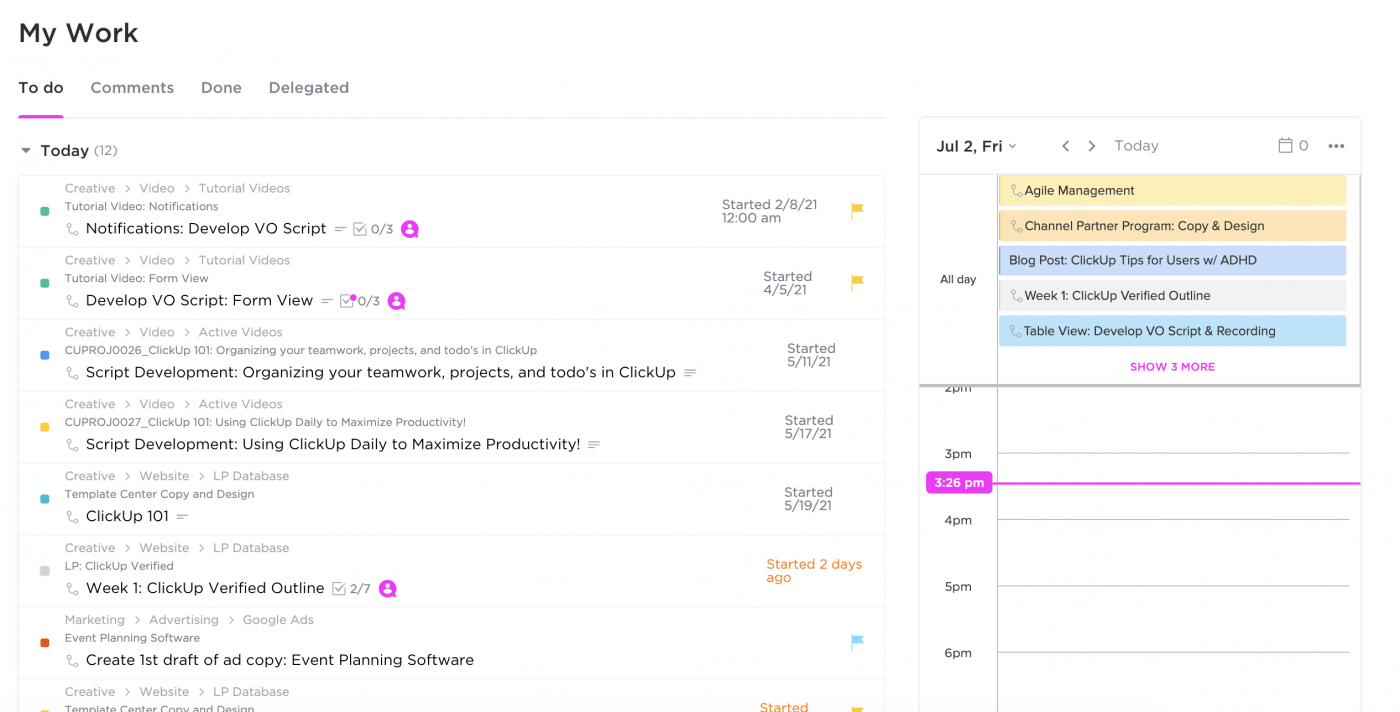
In an instant, all of my daily to-dos are front and center, cutting through the noise of viewing all of my current work at once!
Tip 6: Add Custom Fields to tasks
Helps with: 🗂️ 🧠 🔍
Oddly enough, I actually love organization. My shelves are organized with dozens of tchotchkes, my closet is impeccable, and my art supplies are always just so. What I struggle with is efficiently organizing things that can stress me out, like say, my finances or workload. It’s a negative habit that ClickUp has definitely helped me improve upon and Custom Fields are a huge part of that.

Custom Fields are where you create your own filing system and organize things based on whatever information you fancy. These help me make sure I don’t forget general details about a task that may otherwise not stick in my brain right away. Setting Custom Fields for task-specific notes has been extremely helpful with remaining on top of all moving parts.
Tip 7: Use Assigned Comments and Proofing
Helps with: 🧠 🔍
ADHD can present as constantly overlooking or having trouble retaining certain details. As a writer, I need to keep close track of details and feedback without having to rely on my memory. Being able to leave and receive Assigned Comments on Docs, files, and more have helped me track and implement feedback with perfect context.

What Assigned Comments are to writers, Proofing is to designers: it’s a specific way to leave and receive feedback directly on your files, so you don’t have to worry about keeping feedback somewhere you’ll definitely forget about in five minutes. Both of these tools are perfect for jobs that are extremely detail and communication-oriented (and perfect for the folks who thought they’d always struggle with those things!)
Owning Your Kick-Ass Abilities

It’s so empowering to discover that things you once thought were burdens may not only be improvable but may also be the root of some of your gifts. With the right tools, you’ll realize that while some things may never come as naturally to you as they might for others, there are amazing strengths you have that other people could only dream of having.
Things like high intelligence, natural charisma, and being a lowkey human encyclopedia are all connected to the ADHD mind—and that’s something to celebrate.
Not everyone with ADHD has the same preferences, but that is exactly why ClickUp is such a helpful tool: it encourages us to explore and experiment until we find that magical solution for something that’s never come easy. In ClickUp, the correct way to do something is by doing it in whatever way works best for your needs…
And that is a type of freedom that some minds just thrive with.
Finding the perfect workflow for your mind begins with one step. Click here for a helpful demo about getting started with ClickUp!

Questions? Comments? Visit our Help Center for support.